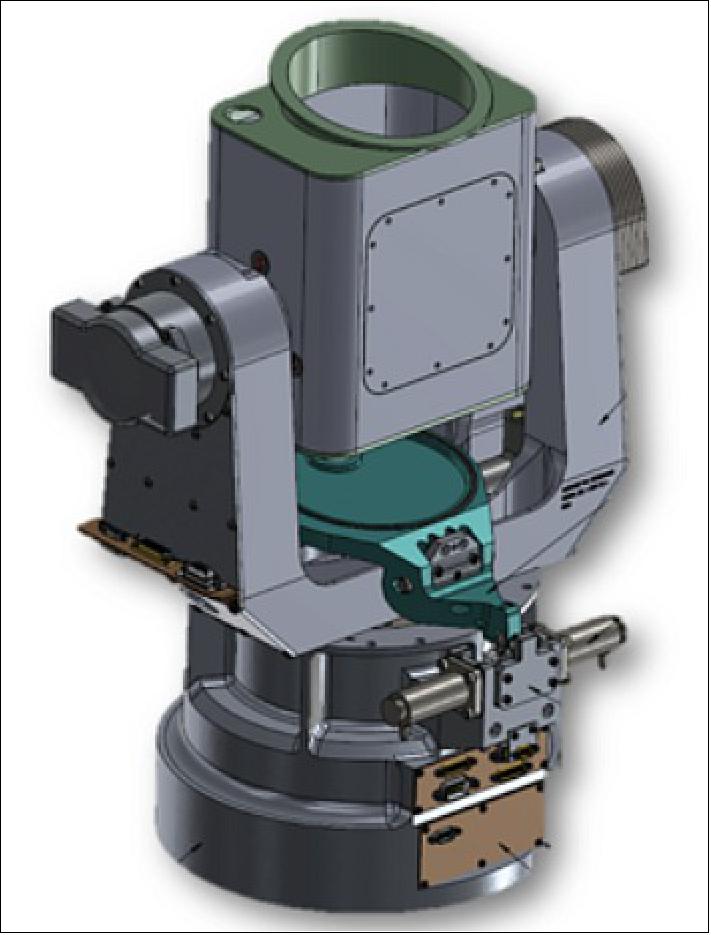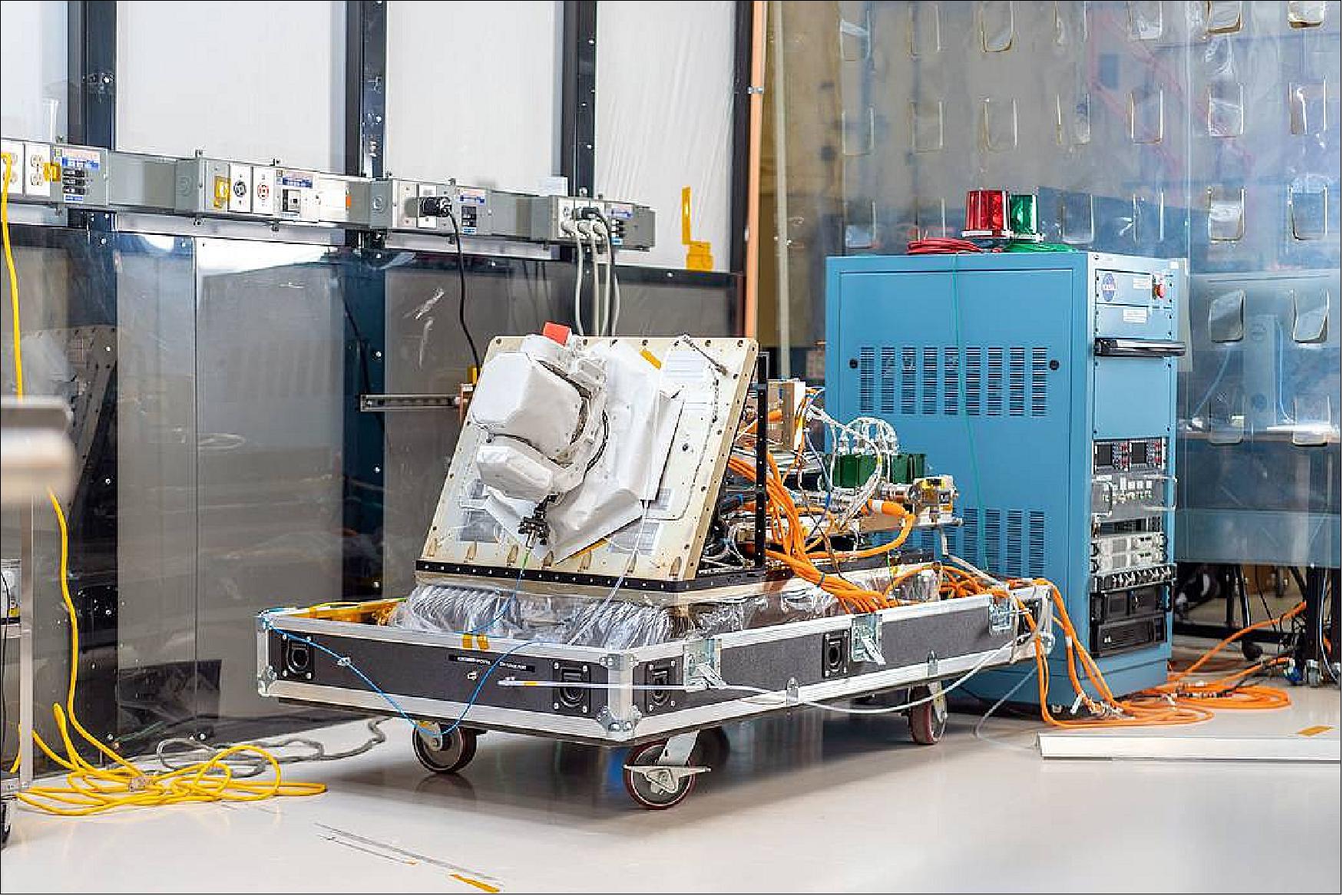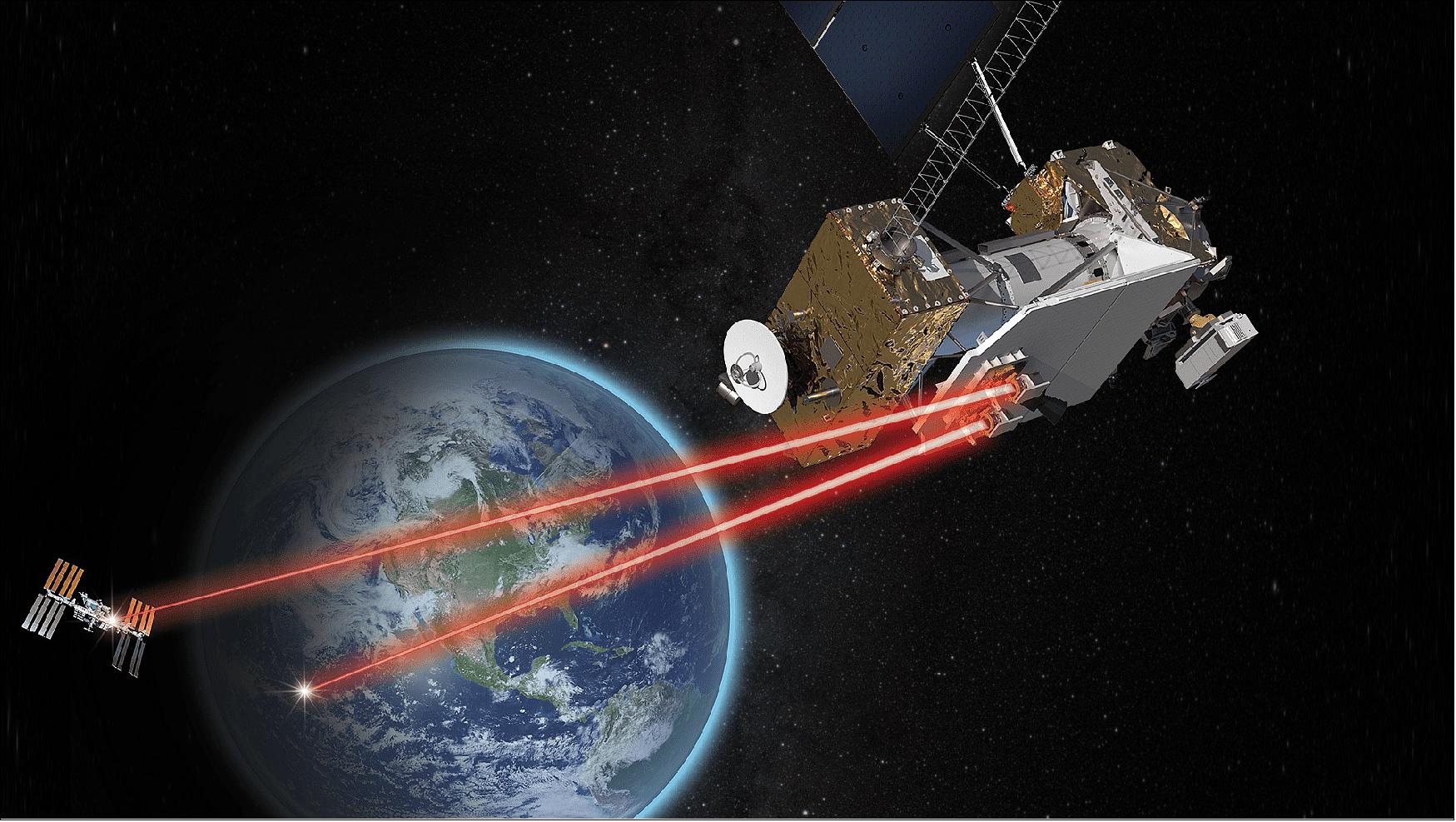ISS: ILLUMA-T (Integrated LCRD LEO User Modem and Amplifier Terminal)
Human Spaceflight
ISS-Utilization: ILLUMA-T (Integrated LCRD LEO User Modem and Amplifier Terminal)
NASA wants to update its existing radio communications system on the International Space Station (ISS) with optical communication technology. Optical communication systems, which use laser beams to transmit information through space, promise the ability to transmit data between a spacecraft and Earth at a much higher rate than radio-frequency systems. Our researchers are designing ILLUMA-T, a laser terminal that will provide an optical communications link from the ISS to NASA's Laser Communications Relay Demonstration satellite, which, in turn, will use optical communications to relay the data from the ISS link to a ground terminal at a rate 10 to 100 times faster than current radio frequency communications systems. This capability could greatly increase the amount of scientific data transferred from the ISS. 1)
• NASA's Integrated LCRD Low-Earth Orbit User Modem and Amplifier Terminal (ILLUMA-T) will fly aboard the International Space Station, empowering the astronauts living and working there with new capabilities. Laser communications enable missions to transmit more data in a single transmission. More science and exploration data from space allow NASA to make more discoveries about our planet, microgravity, and the human spaceflight experience. 2)

- ILLUMA-T will gather data from the space station and send to the Laser Communications Relay Demonstration (LCRD) at 1.2 Gbit/s. LCRD, as a relay satellite, will send the data down to ground stations in Haleakalā, Hawaii or Table Mountain, California. Together, LCRD and ILLUMA-T will be the first fully operational end-to-end laser communications system.
- Laser communications systems provide numerous benefits to missions, including improved size, weight, and power requirements over comparable radio systems. A smaller size increases capacity on the spacecraft for other science instruments. Less weight enables cost savings. Less power drain also means longer lasting batteries. These benefits are essential for missions as we explore further into space.

Development Status
• April 27, 2023: The International Space Station (ISS) partners have agreed to extend the operational period of the ISS. The United States, Japan, Canada and participant European Space Agency (ESA) countries will support operations until 2030, while Russia has committed to continuing station operations until 2028. 5)
• July 18, 2022: Soon the International Space Station will get a laser light terminal: Beams of invisible infrared light will soar through the atmosphere, capable of communicating pictures and videos from astronauts and experiments on the space station, thanks to NASA's brand-new laser terminal called ILLUMA-T (pronounced "ill-LOO-mah-TEA"). 3)

- In May, ILLUMA-T (formally the "Integrated Laser Communications Relay Demonstration Low-Earth Orbit User Modem and Amplifier Terminal") arrived at NASA's Goddard Space Flight Center in Greenbelt, Maryland. There, the payload is undergoing final assembly and testing to ensure it can withstand the rigors of a rocket launch and the extreme environment of space.
- Prior to its arrival at Goddard, the ILLUMA-T payload was at the Massachusetts Institute of Technology's (MIT) Lincoln Laboratory, where it was designed and partially built for NASA's Space Communications and Navigation (SCaN) office. NASA has partnered with MIT Lincoln Laboratory on many missions, including the recent TeraByte InfraRed Delivery (TBIRD) payload.
- Once installed on the space station, ILLUMA-T will use laser communications to relay data to and from Earth via NASA's Laser Communications Relay Demonstration (LCRD). Lasers offer missions higher data rates than traditional radio waves. That means more science and exploration data can be sent to Earth in a single transmission. The shift from radio frequency to laser communications is similar to switching from dial-up to high-speed internet.
- Since its completion in 1998, the space station has relied on NASA's Tracking and Data Relay Satellites (TDRS) to provide radio frequency communications and send data to and from the Earth. After its initial experiment phase with LCRD, ILLUMA-T could be used to substantially increase data to and from the space station.
- The ILLUMA-T payload is managed by NASA's Goddard Space Flight Center in Greenbelt, Maryland. Partners include the International Space Station program office at NASA's Johnson Space Center in Houston and the Massachusetts Institute of Technology Lincoln Laboratory. ILLUMA-T is funded by the Space Communications and Navigation (SCaN) program at NASA Headquarters in Washington.
• May 26, 2021: Laser communications will revolutionize the way NASA sends and receives information to and from space. Leveraging the advantages of infrared light, laser systems will provide missions with extraordinary data capabilities, leading NASA into the next era of space communications. This summer, NASA will launch the Laser Communications Relay Demonstration (LCRD) to test the validity of laser systems. However, LCRD is just one laser communications mission on the road to operational laser communications with both predecessors and follow-on missions. 4)
- The ILLUMA-T payload is expected to launch in 2023 to the ISS and will be installed on the Japanese modules's exposed facility.

References
1) "The ILLUMA-T will enable optical communications on the International Space Station," MIT, 2022, URL: https://www.ll.mit.edu/r-d/projects/illuma-t
2) "ILLUMA-T: 2023," NASA, 15 June 2018, URL: https://www.nasa.gov/directorates/heo/scan/opticalcommunications/illuma-t/
3) Katharine Schauer, "Laser Terminal Bound for Space Station Arrives at NASA Goddard for Testing," NASA Feature, 18 July 2022, URL: https://www.nasa.gov/image-feature/goddard/2022/laser-terminal-bound-for-space-station-arrives-at-nasa-goddard-for-testing
4) "NASA Laser Communications Innovations: A Timeline," NASA Feature," NASA Feature, 26 May 2021, URL: https://www.nasa.gov/feature/goddard/2021/nasa-laser-communications-innovations-a-timeline
5) Garcia, Mark. “Partners Extend International Space Station for Benefit of Humanity – Space Station.” NASA Blogs, 27 April 2023, https://blogs.nasa.gov/spacestation/2023/04/27/partners-extend-international-space-station-for-benefit-of-humanity/
The information compiled and edited in this article was provided by Herbert J. Kramer from his documentation of: "Observation of the Earth and Its Environment: Survey of Missions and Sensors" (Springer Verlag) as well as many other sources after the publication of the 4th edition in 2002. - Comments and corrections to this article are always welcome for further updates (eoportal@symbios.space).